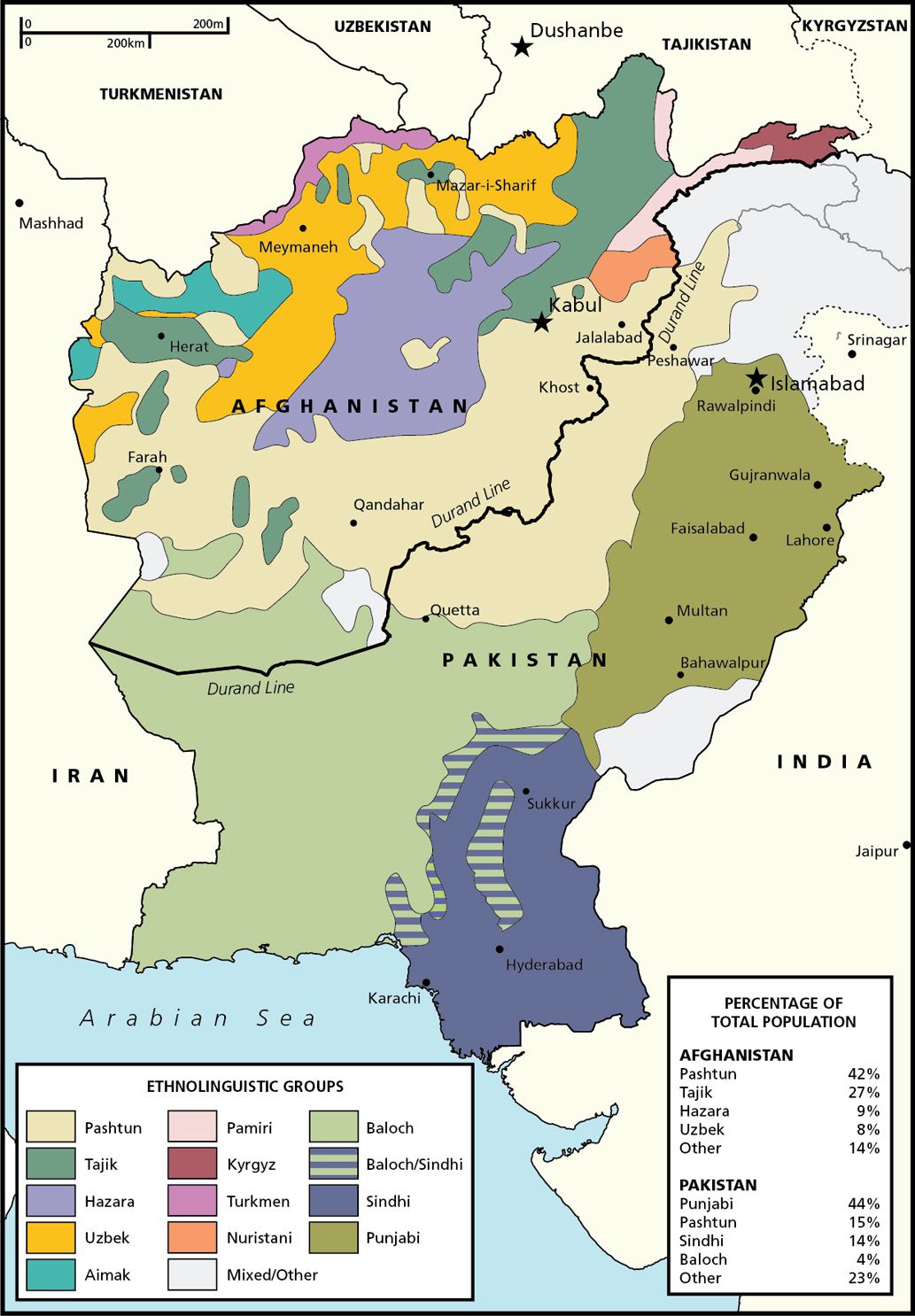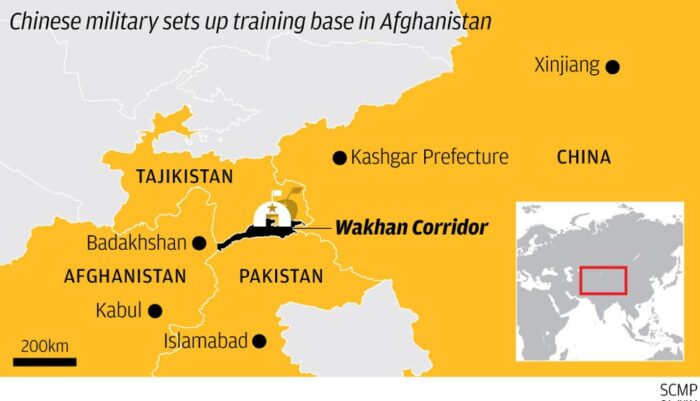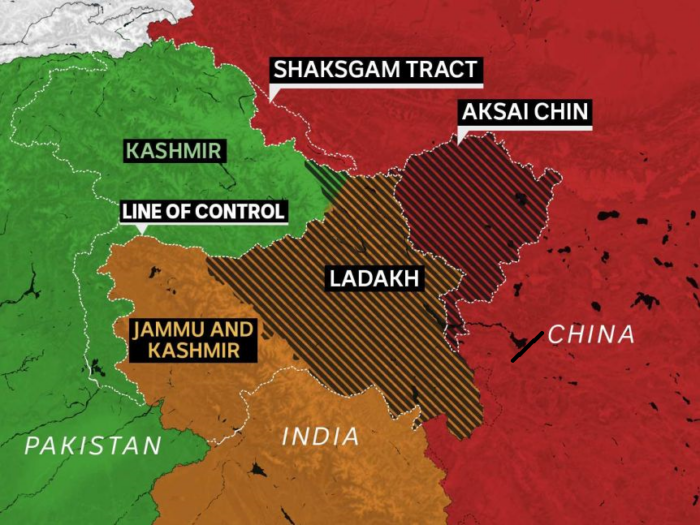1.To heck with them!
All of a sudden, major military & historic powers in Western Asia are worried and frantically talking to each other. That alone proves that Biden-Blinken are right to wave goodbye to Afghanistan.
For 20 years, America has spent massive amounts of money and committed military men & machines to subdue Pakhtuni Taleban. It hasn’t worked for America for one reason or another. And while America bled money & blood in Afghanistan, all the major Asian countries stood by and watched. So finally Biden-Blinken said you guys manage it. Not our problem any more. They are 100% right. And we applaud them.
Just think how many of the world’s powers are around Afghanistan – Russia, the 2nd largest military & nuclear power; China the budding superpower with a massive military & a next door neighbor of Afghanistan; Iran, now the major power in Middle East; Napakistan, the 4th largest nuclear power & the regime that created & nurtured the problem for 42 years and finally, a little distance away, India, the other massive military power behind only China.
And they all have the same goal. So if these five massive military machines cannot get together to solve Afghanistan, why the heck should America keep bleeding to help them? To heck with that, said Biden/Blinken. And they are right.
2. To the Victors go the spoils
Countries & Diplomats seem stunned at the rapidity with which the Taleban have reportedly taken over 85%-90% of what is today’s Afghanistan. Sorry, but they are blind & deaf idiots. Anyone who knows anything should have expected it.
The problem is Americans never respected the Taleban or even the Pakhtun race that Taleban belongs to. The troops that came in early into Afghanistan reportedly (NYT) derided Russian military for losing to those “monkeys”. American diplomats were not any better. As we wrote on April 25, 2009, President Obama’s “Special Envoy Holbrooke described the Taleban as “murderous” in a CNN interview last week.”
In that article, we wrote:
- “The Taleban are not stupid, illiterate crazies as the Pakistani Panjabis and Americans think. The Taleban leaders are extraordinarily intelligent men who understand tactics and strategy. Their game plan combines military tactics with social, religious and media tactics to win hearts & minds besides winning on the ground. … The Taleban are smart. They retreat very quickly when they realize they have made a mistake. … “
This is how they fought the Soviets from 1979 to 1989 and the Americans from 2001 to 2021. So any who is surprised how quickly they have captured 85% of Afghanistan doesn’t know them or doesn’t know how this is similar to their conquest of Afghanistan in the mid-1990s.
The one big difference is that today’s Taleban leadership understands how they quickly lost everything in 2001 that they had won in the mid-90s.
3. The 2001 battle against Taleban
To understand how & why the US forces blew away the Talebani leadership, look at the ethnic map of Afghanistan courtesy of National Geographic:
This shows you two things:
- The Pakhtuns (Pashtuns) are only 42% of Afghans – the largest minority but still a minority.
- Their heavy handed rule in late 1990s united the Tajik (green), Hazara (purple) & Uzbeck (orange) minorities into what they called The Northern Front. Combining the manpower of the Northern Front with US Special Forces & US Air Force quickly demolished Talebani fighters and, in the true Pakhtun fashion, they ran away into their Pakhtun homeland inside NaPakistan.
Now you understand why today’s Talebani leadership has very quickly captured the northern posts on the borders of Tajikistan & Uzbekistan. This is not only to prevent forces coming into Afghanistan from these northern neighbors but also to prevent Afghan government troops escaping to those lands to seek sanctuary & perhaps build up to fight another day.
4. Joint Goal of Russia & China? With US Support?
The re-emergence of the Taleban on the borders of Tajikistan has unnerved both Russia & China according to geopolitical sources:
Geopolitical Futures – July 6, 2021 –
- Escalating violence. Tajikistan is deploying an additional 20,000 troops from its reserves to the Afghan border amid concerns over escalating violence in Afghanistan following the withdrawal of U.S. troops. Tajikistan reported on Monday that roughly 1,000 Afghan fighters crossed into its territory due to fighting with the Taliban. … Meanwhile, Russia, which has a military base in Tajikistan, conducted exercises in the country in anticipation of rising instability along the border.
Gzero media – Afghanistan’s neighbors on edge – July 7, 2021
- Some of Afghanistan’s neighbors are nervous. Over the weekend, Russia’s top diplomat Sergey Lavrov admitted he’s “worried” about Taliban-backed militants taking control of vast swaths of territory in northern Afghanistan.
- The Russians, along with the Chinese, fear that if the Taliban further destabilize Afghanistan, that instability will spill over to the five Central Asian countries, which have their own history of jihadist violence. All are former Soviet republics which Moscow still regards as part of its sphere of influence, and which China imports a lot of oil and natural gas from.
- For their part, beyond jihadists, the last thing the Central Asian stans want is an Afghan refugee crisis on their borders. In the past few days one of them — Tajikistan — has seen over 1,000 members of the retreating Afghan army cross over into its territory as they fled the Taliban.
- Meanwhile, the US has been quietly reaching out to Kazakhstan, Tajikistan, and Uzbekistan for permission for US intelligence operatives to keep tabs on the Taliban from their territory. Washington also wants these countries to temporarily host the families of thousands of Afghan translators while they wait for US visas.
- Still, America’s interests in the region will soon align with those of its two main adversaries: Russia and China. None of them wants to be in Afghanistan, but all want the country to be relatively stable, even if it’s run by the notoriously unpredictable Taliban.
5. Smart Option for the Taleban?
As we said, the Talebani leaders are NOT dumb and they know their geopolitical history. The biggest & most lethal invasions of Afghanistan have come from Uzbekistan & Tajikistan. The armies of Genghis Khan massacred more Pakhtuns any one else & they surrendered en masse to him. This is when the Pakhtuns adopted the Mongoli “Khan” title, a title that is used even today in Hindu-majority India.
After Genghis, Central Asia became a part of the Khanate of Chagatai Khan. a son of Genghis. Then Afghanistan became Muslim when Khan Tughlukh Timur (1360-1363), a descendant of Chagatai, converted to Islam. For about 150-200 years, the center of power in Central Asia was Samarkand, the great city of Timur.
About 150 years later, Uzbeki Zahir-ud-din Muhammad (Babur) lost the battle for Samarkand in 1501 and came south to capture and rule Afghanistan. That was just a pit-stop for him. Soon he launched a conquest of Panjab, a province of then India south of Afghanistan. After conquering Panjab, he attacked Delhi and began a regime that the Iranian-Brits called the Mughal Empire.
The Taleban know this history and realize that their weakness is an attack from their north from Tajikistan & Uzbekistan. And now they face Russia in Uzbekistan & Tajikistan as well as China in the Pamir province of Tajikistan along the Wakkan Corridor. The Chinese have already established a military training base in the Badakhshan province that borders Tajikistan:
The Taleban, smart as they are, have already promised China to not attack Chinese bases & infrastructure in Badakhshan. They will also come to terms with Russia & Tajikistan in a sort of non-aggression arrangement.
The Taleban also know that they need money, lots of it, if they want to govern Afghanistan. And no one has more of it than China & to a smaller extent Russia. So we do not expect much of a problem, jihadi or otherwise, between Taleban & the northern Tajiki-Uzbeck regions.
That will satisfy Russia & China, we think, and it will secure Taleban’s northern flank.
6. The Hearts, Minds & History of the Pakhtuni Taleban
Look at the above ethnic map of Afghanistan again. The Pakhtun areas, in light below, are below Kabul. Notice the black line that crosses the yellow Pakhtun areas titled the Durrand Line.
Durrand was the British diplomat who partitioned the Pakhtun land & people in 1893 by establishing the “border” between Afghanistan & British-occupied India. That line is still regarded as the “border” between Afghanistan & today’s NaPakistan even though no Afghan, secular, religious or jihadi, recognizes that dividing line.
The Pakhtun area, in light yellow, shown inside today’s NaPakistan is called Khyber Pakhtunkhawa or “Pakhtun area on this side of Khyber” (pass). Today’s Taleban leadership was born, created & supported by the NaPaki leadership in this area. It is in this area where they were taught the finer points of military terrorism by the Napaki ISI, the military intelligence arm that has specialized in terrorism.
The ISI came into prominence and power under Hameed Gul (1987-1989) who masterminded the Mujahideen activities inside Soviet controlled Afghanistan. The November 2008 terrorist attack on Mumbai was under the ISI leadership of Ahmed Shuja Pasha (2008-2012). Both Hameed Gul & Ahmed Pasha are reportedly Pakhtuns.
Look again at the light yellow region inside today’s NaPakistan, the area officially called “land of the Pakutuns“. Now think of Afghanistan as a united country ruled by Pakhtuns who grew up in the refugee slums of Khyber Pakhtunkhawa. Don’t you think they dream of uniting both their Pakhtun lands under their rule?
Of course, the reality is that families of the Talebani leadership live inside this Khyber Pakhtunkhawa just as Osama Bin Laden lived there. So trying to take over Khyber Pakhtunkhawa is not so easy to even dream about.
This unification of both parts of Pakhtun lands or the creation of an “irredentist Pashtunistan” is not a new thought or concept. It lies inside the heart of every Pakhtun (Pashtun) everywhere in the world. We wrote about it in January 2011. AND it was suggested by US Ambassador to India, Robert W. Blackwill in January 2011 in an article in Foreign Affairs titled Plan B in Afghanistan.
This suggests why, in a few years, a united Afghanistan under the Taleban might prove to be a nightmare for NaPakistan & its leadership.
7. A nightmare for NaPakistan
After creating, nurturing & supporting the Taleban for decades, now the Napaki leadership is petrified of their mentee winning in Afghanistan. A Wall Street Journal article quotes Laurel Miller, a former acting U.S. special representative for Af-Pak as saying:
- “Pakistan is a bit stuck,” … “The better outcome for Pakistan is that the Taliban go far enough militarily to dominate terms in a negotiation, but not so far that they achieve a military victory and try to rule monopolistically,”
The article also quotes NaPaki Prime Minister Imran Khan as saying,
- “When [the Taliban] think they’ve won the war, it is very difficult, from Pakistan’s point of view, to make them come to some kind of political settlement, …. “We want there to be a political settlement at all costs.”
What is their big fear? The WSJ article states:
- “The fear in Pakistan is of a flood of refugees across the porous border that would add to the 1.4 million registered Afghan refugees already living in the country. Worse, a triumphant Afghan Taliban would galvanize Pakistan’s own Islamist militants whose power has waned as a result of successive military operations in the country’s tribal border areas.”
- “Our jihadis will be emboldened. They will say that ‘if America can be beaten, what is the Pakistan army to stand in our way?’” said a senior Pakistani official. “War does not suit us at all. We’ve seen it for 40 years.”
Isn’t this laughably ironic? A regime that, for decades, fostered & actively managed a series of terrorist attacks against U.S. troops inside Afghanistan and against India now says “War does not suit us at all” !
Just as the Pashtun people were partitioned in 1893, the Panjabi people in India were partitioned in 1947. Now under the threat of Pakhtuns uniting and breaking up this artificial land of NaPakistan, would the Napaki Panjabis think of uniting with Indian Panjabis? That reminds us of the question a senior Napaki guy had asked a good friend of ours ( a senior Indian guy in his own right):
- “If 5 million Napakistanis come knocking on India’s doors begging to be let in, how will India react?
Now wonder about the following. Since a complete victory by the Pakhtuni Taleban would be a nightmare for Napaki leadership, will they now change their support to the others in Afghanistan fighting the Taleban?
Now also think about how India might want to protect itself. Under today’s lines of control, India has no land access to Afghanistan. So it might come to the same area that we discussed last year in the China-India military conflict – the Indian territory of Kashmir that is still occupied by NaPakistan.
After all, this part of Kashmir is where Afghanistan, NaPakistan, China, Tajikistan and India come together !
Send your feedback to editor.macroviewpoints@gmail.com Or @MacroViewpoints on Twitter


